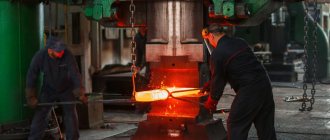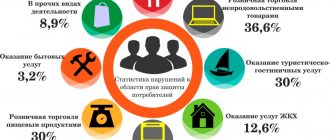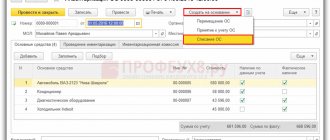Workplaces with computers, copying equipment, and household appliances not used in the technological process are officially exempt from certification. It seems that small businesses for the most part have freed themselves from the need to certify workplaces.
But, as usual, everything turned out to be not so simple.
Firstly, the relaxation was made only in February 2013. And in reporting to the Social Insurance Fund you need to indicate certification data at the beginning of the year. This means that all organizations still had to carry out certification earlier, and by February 2013 they would already have the numbers. Dash marks will not be accepted in reports. Suddenly.
Secondly, employees who spend more than 50% of their working time at the computer are required to undergo a medical examination once every 2 years. The Certification Procedure states that if employees must undergo medical examinations, then the workplace is subject to mandatory certification. This clarification was given by the Ministry of Labor in its letter dated 04/08/13 No. 15-1-859.
There is a spoonful of honey. If, based on the results of the certification, the workplace is found to be safe, then it is not necessary to conduct it again (as stated in the order of the Ministry of Labor and Social Protection of the Russian Federation dated December 12, 2012 No. 590n).
But, let's talk in more detail about which jobs and how to certify them.
Assessment of workplaces
This is a legalized system of measures aimed at identifying harmful, complex, dangerous, risky factors in a particular place of work and the compliance of its conditions with labor assessment standards (LO).
Certification is designed to help create a safe working environment, as well as determine benefits and compensation for possible harm caused to a person in the process of work. Goals of certification:
- assess the degree of influence of production circumstances on a person;
- identify hazard reduction measures;
- to reasonably assign compensation, benefits and other preferences to workers in hazardous production areas as determined by law.
The result of the procedure is a certification card, which is used to determine ways to minimize occupational injuries.
Frequency and timing of certification
SOUT is carried out at least once every 5 years. A newly created place is certified within no more than 60 working days, as required by law.
ATTENTION! If working conditions change, the enterprise has the right to carry out an extraordinary assessment.
The following workplaces are subject to certification:
- based on the results of the previous inspection, designated as harmful and dangerous;
- newly created;
- requiring medical examinations (both upon admission and periodically);
- providing for the use of production equipment, machines, mechanisms, as well as their repair;
- using hand tools;
- using labor tools that have an adverse effect on humans (radiation, etc.);
- related to raw materials and supplies.
The Code of Administrative Offenses of the Russian Federation contains provisions providing for penalties for violations of the rules for certification of workplaces. Failure to comply with the time frame for carrying out the procedure will result in a fine of up to 30 thousand rubles or a ban on the company’s work for a period of 1 to 3 months. Violations of the procedure - a fine for an official from 5 to 10 thousand rubles, and for a legal entity - up to 80 thousand. For the unsatisfactory condition of production zones, an official will be fined from 20 to 30 minimum wages, and for a legal entity - up to 300 minimum wages. Avoidance of measures to eliminate deficiencies during re-fixation will entail suspension of the company’s work for up to 3 years.
Why is this necessary?
In addition to the fact that this is a legal requirement and by complying with it you will avoid fines, I would like to understand whether it will be beneficial for the organization itself.
After certification of workplaces, you can receive a discount on contributions for injuries of up to 40%. The rate depends on the category to which your company will be classified according to the degree of professional risk. Moreover, you can conduct certification at the expense of the Social Insurance Fund. You will learn how to reimburse the costs of workplace certification at the end of the article.
Certification of workplaces will help reduce the tax burden, because based on the results of certification, benefits and compensation to employees are calculated, and they are not subject to taxes and contributions. You will have the opportunity to legally include in the cost of production the costs of improving the working conditions of employees: the purchase of protective equipment, special clothing, etc. You will be able to reduce utility costs by regulating the energy consumption of lighting, heating, etc. Certification of workplaces will help to significantly reduce the responsibility of the manager when occurrence of an accident at work. You will be able to prove that you provided sufficiently safe working conditions.
Procedure for certification
The assessment is carried out by a specially created commission, which includes representatives of:
- Responsible for safety and labor protection at the enterprise.
- Safety experts.
- Trade unionists of the company.
- The organization conducting the certification.
The procedure for certification of workplaces consists of several stages, the first of which is preparatory. The management of the inspected institution appoints the chairman of the commission, usually the employee responsible for occupational safety measures. Based on the size of the organization and the scope of its activities, the certification commission may include: an occupational safety engineer, a personnel service employee, a mechanic, an electrician, an accountant, a physician, a trade union member, and a technologist. The size of the commission is not regulated by regulations and may vary. In large companies, such commissions should be present in each division with a central commission at its head.
Persons participating in the inspection are trained by a specially assigned regional occupational safety expert. Subsequently, a list of necessary measures is generated with specific deadlines for monitoring implementation, a list of all workplaces subject to inspection is created, with a description of the hazardous factors. And finally, comprehensive information about each of the workplaces and influencing factors is collected and systematized, and regulatory documents containing indicators of injury risk and proper provision of protective equipment are being prepared.
You may be interested in: Classification of working conditions according to working environment factors
Next comes the main stage, that is, the actual verification. The commission checks jobs based on the following factors:
- biochemical factors;
- the presence of harmful fields and radiation;
- acoustics and noise level in the room;
- workplace illumination;
- vibration level;
- degree of injury hazard;
- microclimate conditions;
- the severity and intensity of work;
- the need to use special protective equipment.
All data is reflected in the inspection protocol: the date of the measurements, the name of the institution and department, the list of measuring instruments used, the names of the factors being analyzed. A floor plan is provided showing the exact location of measurements, and the standard value of the measured indicator is indicated for comparison with the actual one. At the end, the signature of the person who supervised the measurements and research is affixed, then the seal and signatures of the employees of the controlling organization if they are involved.
At the final stage, final documents are developed with comprehensive results of all inspections carried out:
- a list of places of work with resulting indicators, including differentiated by department and in general, with clarification of the number of employees and the provision of their personal protective equipment and protective clothing;
- protocols for assessing compliance with health and safety requirements;
- a plan of proposed measures to eliminate identified problems.
All documents must be signed by the chairman and members of the commission. The results are communicated to the entire team along with exact deadlines.
IMPORTANT! The test results are stored for at least 45 years, because are strict reporting forms.
Advantages of automated workplace.
First of all, it is worth noting that certification is necessary to justify the planning and financing of measures to improve working conditions and safety. We are talking about discounts and surcharges to the insurance rate against accidents. The Social Insurance Fund has established a maximum discount of 40% if a number of requirements are met: timely payment of contributions, mandatory medical examinations of employees, certification of 30% of jobs, and activity for at least three years. The Social Insurance Fund does not rule out the possibility of paying part of the costs of carrying out automated workplace work at workplaces. In case of accidents at work, the automated workplace is the employer’s main assistant and helps to avoid criminal liability. With the help of AWS, the actual situation is visible, which can be improved if necessary. Thanks to this, labor productivity increases and the psychological climate improves.
Required documents
During the special assessment, the following set of documents must be drawn up:
- Order on the creation of a commission on SOUT.
- Order for certification.
- Workplace certification card for working conditions.
- Protocol for assessing the state's PPE supply.
- Protocol for assessing injury hazard conditions.
- Required actions to improve conditions.
- Minutes of the meeting of the certification commission (final).
- Table of working conditions classes.
- Data on compensation due to employees in these positions.
- Information about the certifying organization.
- Schedule of work deemed necessary based on the results of the inspection.
All of them are stored at the enterprise as evidence of the procedure performed in case of inspection by regulatory authorities.
New order of workstations.
The conduct of automated work is regulated by the approved procedure. The latest regulatory document is Order of the Ministry of Health and Social Development of the Russian Federation No. 342n, which came into force on September 1, 2011. The certification process itself originated before our era. In Russia, awareness of the need to introduce control came in imperial times, when manufactories began to develop, and at the same time attempts were made to calculate mortality due to work in unfavorable working conditions. Further, public opinion began to spread to a documentary basis. It took more than a decade to regulate the process of checking and analyzing the situation in the workplace by law. You can familiarize yourself with the history of the formation of automated workplaces in Russia in the material: “Certification of workplaces.”
The previous order was Order of the Ministry of Health and Social Development of the Russian Federation No. 569 of August 31, 2007, which implied more independent certification by the employer himself. The results were often formal in nature, not corresponding to reality. This procedure excludes such actions, and now certification is carried out by the employer together with the certifying organization. These organizations were announced earlier, but their presence was more of an advisory nature. The entire course of work during certification, the correctness and reliability of the results obtained depend on the competence of the certifying organization. Organizations conducting certification must meet a number of criteria: accredited in the prescribed manner, having an accredited testing laboratory , a verified database of instruments for instrumental measurements and highly qualified certification specialists. Compliance with these requirements will allow achieving the quality of automated work.
All workplaces are subject to certification. The frequency of each of them is once every five years. “Since December 12, 2012, changes have occurred, read more here.” The start of work is counted from the moment of completion of the previous certification. The timing of new certification work is approved in the work schedule for conducting automated work. When commissioning new workplaces, automated work is carried out within 60 working days from the moment they are introduced into the production process. It is worth clarifying that the object is not a specialty, not a profession, but a workplace with a set of characteristic features. By peculiarity we mean the specificity of factor assessments separately for each of them. For example, certification of a welder’s workplace, acting as a working specialty, has its own features and characteristics. When working with automated workplaces at school, at workplaces: teacher, driver, doctor, kitchen worker, cleaner, other characteristics will be taken into account, because each workplace is unique.
The employer's participation in the automated workplace is limited to the organization and completion of certification work. The main requirement is a high-quality result of the work. Therefore, it is necessary to approach the process responsibly. The results of the AWP in the form of a summary statement and information about the certifying organization are provided to the state inspection bodies, which conduct a thorough check of the submitted data. Identified violations may result in penalties up to and including suspension of the organization's activities. Many organizations, even despite such serious consequences, still try to somehow ignore the order or implement it, and do not implement the improvement action plan into the production process. Such violations will sooner or later be identified. Based on the results of 21 thousand inspections of organizations that passed the automated workplace in 2011, the State Tax Inspectorate identified 48 thousand violations. The results of workplace inspections in the constituent entities of the Russian Federation are contained in the register of information on certification results.
Certification result
The final assessment document, which will describe the situation at each certified site, the hazard class, existing benefits and compensation, standards for issuing PPE, actions to eliminate or minimize hazardous indicators, is a certification card.
With its help, places that do not meet work area safety standards are identified, as well as a specific list of unsuitable conditions. In the future, this document is used when registering employees for this position, so that they understand what production conditions await them in their future work.
We work without injuries or accidents!
Modern management systems consider the success of any company in the context of the conditions that surround employees. Healthy, reasonably well-off employees are more beneficial to the organization than angry and dissatisfied ones. Respect for employees and reducing losses are the main tools for increasing labor productivity. Whatever changes occur at enterprises, first of all, you need to take care of the safety of people. Enterprise employees are the most powerful reserves. Therefore, it is important that the work is organized without injuries and accidents.








